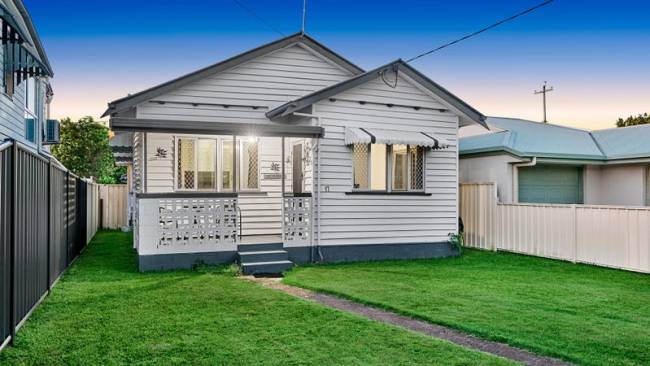Country living: home design ideas and inspiration – how to turn the dream into reality
Building or renovating in the country can be more of a challenge than in the city, so there are a few aspects you need to cover off on first.
Property
Don't miss out on the headlines from Property. Followed categories will be added to My News.
The Fixer is here to answer all your home improvement questions.
Email The Fixer at athome@news.com.au
Last year put a lot of things in perspective for many people.
With less attention on keeping up appearances at the office and more on health and lifestyle, moving to a regional area became attractive for a lot of families, empty nesters and professionals. Depending on where you buy though, you may find yourself choosing an existing home that oozes country charm but lacks some of the mod cons we take for granted in the city.
Renovating an older home in the country can be quite a different experience in terms of access to materials and trades as well as meeting local requirements.
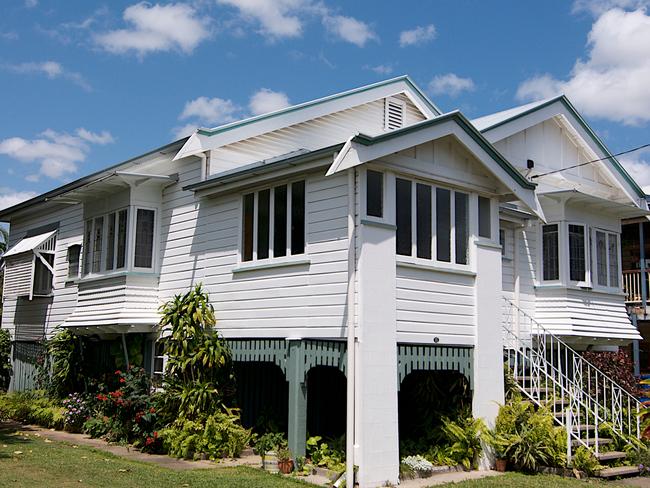
Q. I’ve found a charming weatherboard cottage in a country town that I’ve fallen in love with it but it needs some work. What do I need to know?
A. Ensuring you have good, reliable Wi-Fi is a big tick for anyone considering living and working remotely because, while there are plenty of building problems with the house you can fix, access to the NBN is a whole other matter. If you’re looking at a weatherboard cottage, my first question would be about the weather. Architect Richard Cole, who has built houses in the city and in regional areas, says temperatures vary greatly in the country and you need to be ready for the extremes of heat and cold.
“The temperature can be much more extreme in regional areas,” he says.
“You need to get the basics right with passive solar design and really good insulation.”
If you are truly in the country, or you back on to bushland, you should also check out your Bushfire Attack Level (BAL), which will be available from your local council. Following the 2019/2020 fires, the Building in the Bushfire Prone Area guidelines have been further upgraded. If you are in a high BAL area (BAL40 or Flame Zone), get some advice from a bushfire consultant.
“The cost of building in a BAL40 or Flame Zone can be significant, especially for windows and doors,” says Richard.
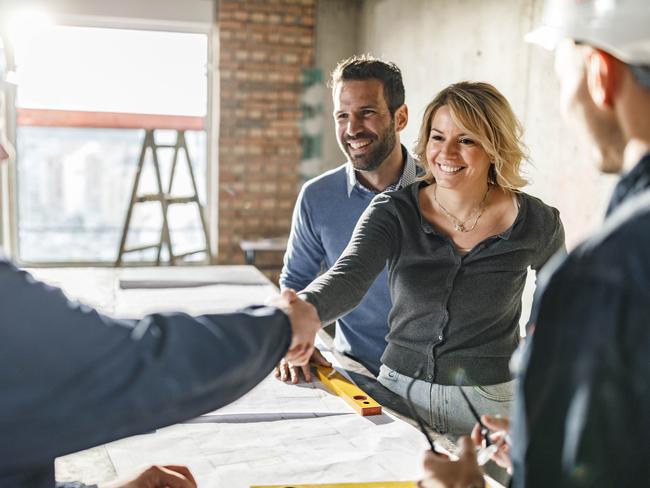
Q. What about building materials? Will that cost more due to the distance?
A. “Materials are pretty standard,” says Richard.
“We try to use local timber suppliers but generally transport is not a big deal. We’ll order in things like tapware but they get shipped all over the country anyway.”
As with any renovation or building project, the more prepared you are, the smoother the job will run. Check on details such as delivery times, what’s in stock and any transport issues specific to your town. If you are not living nearby, having a safe, secure place for deliveries will help.
Some of the services you take for granted on a standard city block may not be available on your site. Richard says it’s worth investigating so that you don’t get caught out.
“If you are building in the country, you may have to add in the cost of sewage treatment and a really big rainwater tank in case of fire,” he says.
Putting a call into your insurance company to identify the risk of flood and fires is a worthwhile exercise as well.
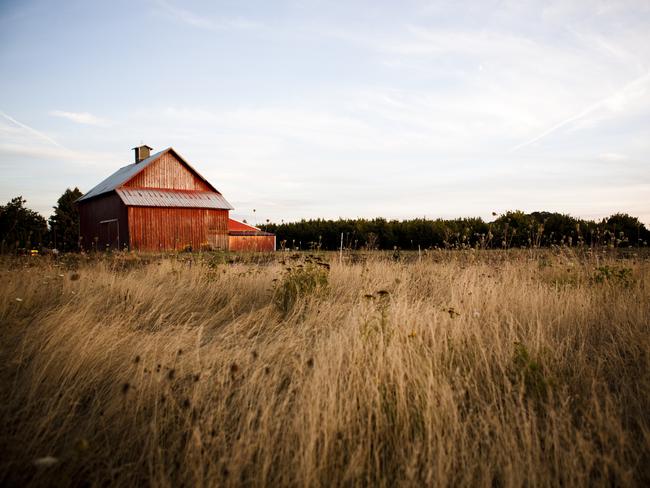
Q. What can I expect from local builders? will I need to call in trades from the city to do some of the work?
A. There are often fewer options with builders and tradespeople in regional areas, but Richard says it’s still better to use someone local.
“We always use local builders, it’s just a matter of finding the right one. Usually there’s one standout builder that everyone knows can do a high quality job,” he says.
“Often they are a bit cheaper than someone from the city, although not hugely so, because the cost of living is a little lower.”
Do the same due diligence as you would in the city — ask for recommendations and check their licence number. If you’d rather work with someone from the city that you’ve worked with before or who comes highly recommended, be sure to factor in the additional costs.
“If you bring someone from the city, you’ll have to pay for things such as their accommodation and transport on top of everything else,” says Richard.
HOW TO BAG A MID-YEAR SALES BARGAIN
We all love a good sale and there are plenty about at this time of year.
Beyond fashion and furniture, building suppliers also use the end of the financial year as an opportunity to clear stock at attractive prices. But while you can always banish an ill-conceived fashion purchase to the back of the wardrobe, the stakes are a little higher when you’re choosing flooring, tiling or benchtop materials. I asked interior designer Monique Sartor, from Sartorial Interiors, to share her tips for bagging a mid-year building bargain without getting your fingers burnt.

Is it possible to grab a bargain on building materials?
There are always bargains around if you have the time. Facebook marketplace, eBay and Gumtree all advertise excess tiles, change-of-mind prime cost items or items that people have ripped out but are still in great nick, such as pendant lights or baths. You really need to know what you need for the project, like tile quantities. If you have the information at hand and the opportunity pops up, go for it. Also, you can always ask your joiner if there are stone off cuts that can be used in your project for bathroom vanities. I have a current job where the owner changed her mind about some tiles and ordered different ones. The originals went on Facebook at a bargain price to get rid of them.
Why are products on sale?
Suppliers may need to move old stock to make room for incoming new styles. There are always sales on if you keep your eye out. A lot of companies will price match, even if they are not having a sale, so keep that in mind. Sometimes suppliers buy in bulk and once it runs out, won’t restock. Be careful. If you haven’t bought enough tiles you’ll be caught short if they’re discontinued.
How do you know if it is a bargain or just something of lesser quality?
Knowing whether something is a bargain really comes down to your research. Getting three quotes, especially for big-ticket items, will help compare prices. If you get two quotes around a similar figure and a third is a lot cheaper, be careful you might get caught out with something of lesser quality. It doesn’t always guarantee that there will not be problems. You pay a premium for a superior product, let’s say Italian tiles, but they’re still not 100 per cent straight or consistent in sizing.

What should you take with you when shopping?
A tape measure, drawings (if you have them) and digital mood board are all great to take with you. Best of all, try to get samples of everything you’re selecting. Lighting in showrooms can be terrible and inconsistent. Bring samples home so you can see the colours more clearly and if it is all going to work together. Keep the samples with you so you can show sales staff your scheme. They can sometimes have suggestions that will work.
Is it a good idea to go shopping with a fixed idea of what you want or should you have a more flexible approach?
I’m a big believer in happy accidents. Stay flexible and if you hit a roadblock because something’s not in stock when you need it, don’t freak out. Sometimes that’s just the universe sending you down an even better path with a better result. I once had a project where we’d chosen the wallpaper, carpet, curtains, re-upholstery and everything was in production but we couldn’t find a wallpaper installer. After a few nights of lost sleep I suggested engaging a mural artist to do a similar image but customised to the space. The client loved the idea, we commissioned the artist and the outcome was unique and beautiful.
The key is to try to foresee when issues may arise or remain calm and adapt if need be. In those moments, reach out to professionals for solutions.
What should you ask before you buy?
Warranties, availability, installation requirements, cost of freight and access into the premises are all important considerations when planning a project and ordering your items. Strata rules can be super strict in apartment blocks so you need to prepare properly for use of loading docks and goods lifts. Delivery costs might also be to ground only, so check if there’s a surcharge for lifts or going up stairs.
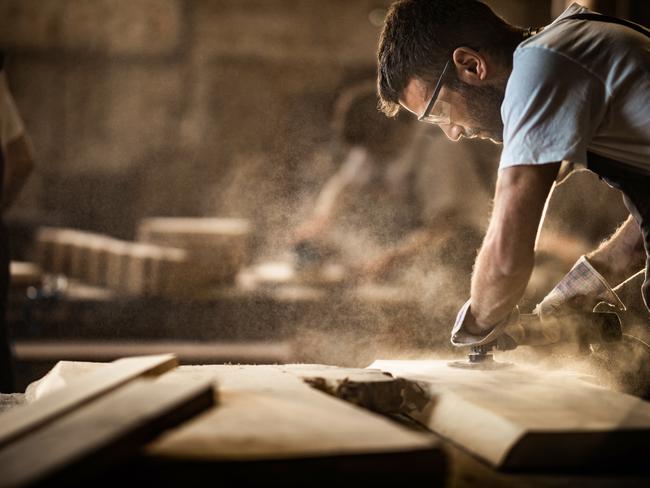
What if my project is delayed, but I have already bought the materials?
If there are delays in the project (such as rain delays), ask if the supplier will keep the materials in the warehouse for you and if so, for how long. Paying deposits to hold stock can also be helpful for peace of mind. Sometimes installation is required to be done by registered installers or you void the warranty.
If you’re renovating, how early should you be collecting materials?
You can start stocking up for your project as early as you want but talk to your builder as soon as you can to let them know your plans.
If you have your heart set on using a pair of second hand French doors, for example, chances are that they will not be a standard size, which is what the builder will be allowing for.
If your project is still months away, make sure you know where you can store your purchases safely before you hand over the credit card. Sale items are generally final.
As with any building project, early and clear communication is key.
ARE SOLAR PANELS WORTH THE COST?
It’s fascinating the difference a few years makes.
Not that long ago, installing solar panels to run all the electricity powered aspects of our homes was mainly the domain of committed environmentalists and bean counters.
But rising energy costs have made solar mainstream. Australia has the highest uptake of solar in the world, with more than two million households fitted with solar panels. For a country blessed with so much sunshine, it makes good sense, and the panels have also come down in price.
Karl Brown, CEO and co-founder of Instyle Solar explains the numbers, installation and maintenance issues so you can see how solar stacks up for you.
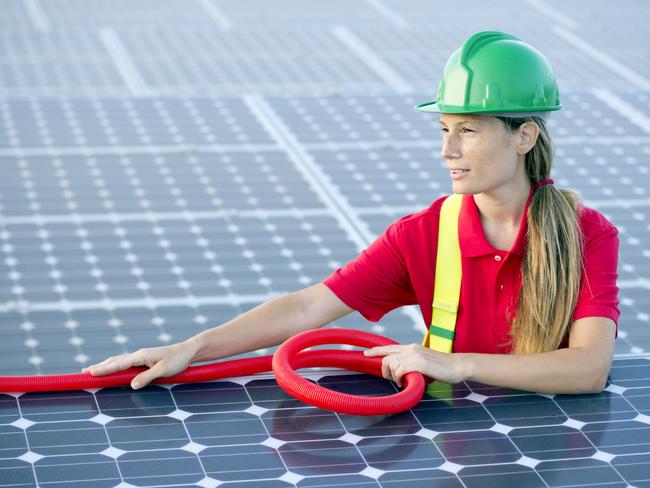
Why get solar panels?
Solar power has many advantages, but the most common reasons to go solar are the financial and environmental benefits. On average, you can pay back your system within three-to-five years with a 20 per cent return on investment. With no carbon emissions and no need to rely on the power grid, solar power is also the most popular sustainable energy solution for everyday Aussies.
How do you know how many solar panels to choose? Is there a standard amount to service a family home?
An average system for a family home is about 6.6kW, however, the size of your system will depend on how much energy your household consumes.
Where should they go on your roof? I’ve heard shade from trees or neighbours can affect their placement. Can you put them on other buildings on your property such as a separate garage or granny flat?
Trees and shading will impact the efficiency of your system. If you’re lucky, your roof will have a 22-23 degree sloped northeast or west facing roof. Colorbond roofs tend to be easier than tiles. You’ll need to have an operator check your roof to determine the placement.

Is it worth getting a battery? Why do people do it?
With a battery you can truly achieve a $0 power bill and will not be reliant on the grid for energy. Batteries are a fantastic solution because you can store excess power generation and use it at times when your system is not producing power, for example at night. Unfortunately, the cost of batteries is still considerable and until we see a decrease in cost, the benefit does not equal the financial investment.
How do you keep them clean? I’ve heard they don’t work as well if they’re dirty.
The solar panels’ performance is related to a set of environmental factors including solar radiation, humidity, temperature, shade, wind speed and more. Dirty panels also contribute to poor performance, with dust, dirt, sandstorms, bird droppings and smog all contributing to soiling.
To clean your solar panels, first and most importantly, disconnect the solar by turning off the switch on the combiner box. This is crucial for your safety. Use a dry or wet sponge to clean the panels and deionised water to wet the sponge. You must not use water with a high mineral content since those particles will adhere to the glass, becoming a focus for humidity or dirt.
Never use a high-pressure hose to clean the modules and try to avoid considerable temperature differences between the water that you use to clean the modules and the temperature of the panel. Never use an abrasive or chemical material to clean the modules. Lastly, never, ever clean a solar module with broken glass or with signs of exposed wires. This is dangerous and could lead to an electric shock hazard.
Can you install them yourself?
Technically you could install a solar system yourself, however there are many regulations and safety concerns and you’ll want to ensure your system operates correctly. Most companies employ qualified electricians to install systems so you can be confident it’s working at maximum efficiency and meets all safety requirements.

Are there any homes that are not suitable for solar panels?
Unfortunately there are some homes that are not suitable for solar panels and there are a few reasons why this may be. Common examples include very complex roof design with chimneys, hot water systems, skylights or other elements that will impact the potential space for a system. Similarly, if your roof is just too small for a system to produce enough energy or shading is substantial, it may not be worthwhile.
Finally, very old roofing is difficult to install on and you may need to replace or fix it before turning to solar power. We always recommend you have a professional survey your home to determine potential solutions or limitations for your solar system.
Are they permitted in heritage areas?
It is possible that you will need a planning permit in order to install solar panels on a heritage building. Check with your local council or government as this will vary by state.
THE BIG PROBLEM WITH ‘FAST FOOD’ FURNITURE
When we talk about environmentally friendly choices, most of us immediately think about food waste and the ‘Reduce, Recycle, Reuse’ mantra.
And that’s fair enough.
According to the Australian Department of Agriculture, Water and the Environment, we waste about 7.3 million tonnes of food each year. But if you’re talking about overall household waste, that’s just one part of the story.
Any quick survey of your neighbourhood council clean up day is a stark reminder of how much we continue to throw away. In a report prepared for the federal government last year, solid municipal waste from household and local government activities accounted for 20 per cent of total waste generated.
It’s time we took a hard look at our love of fast interiors trends and the vast turnover of waste it generates.
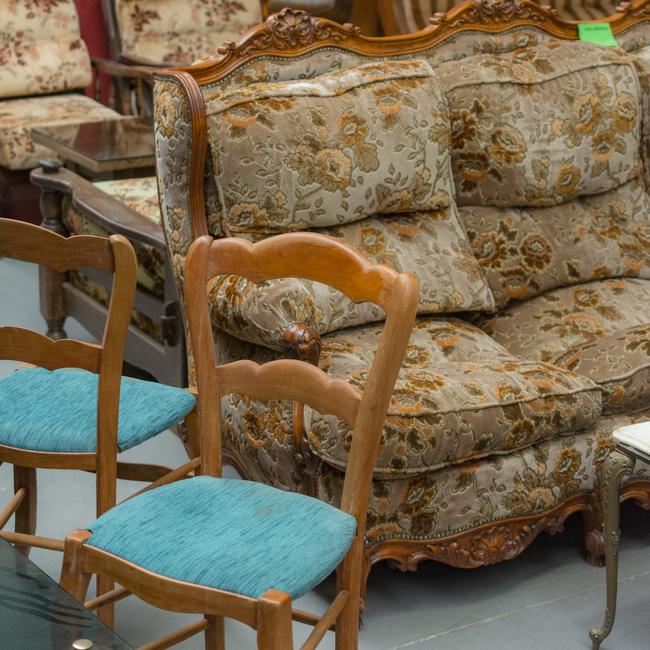
Q. I want to make my house more environmentally friendly. How do I go about making that happen?
A. A couple of generations back, it was pretty common to set up home with old furniture donated by other family members who might have been upgrading or even downsizing. It might have been a bit daggy but the fact that it still survived was evidence that it was at least well made.
As the market for cheap new furniture grew, more and more people looked to budget retailers such as Ikea, Fantastic Furniture or Amart, along with replica furniture stores, selling the promise of a high end look for rock bottom prices. The difficulty is, some of that furniture was not made to last.
While some pieces can go for some time with occasional use, others will be put out for collection within a few years because their components have failed. For furniture made from chipboard or MDF, the chances of recycling the materials are minimal.

How can I choose furniture to last? I don’t have a lot of money and I may be moving house in a couple of years.
With new furniture, it is often a case of ‘you get what you pay for’ but there are a few ways to find furniture that will go the distance, even on a budget.
Look for furniture made of solid wood, which will be able to take a few knocks, and even be repaired if necessary.
Most sofa frames should be guaranteed for at least five years, but there are others with warranties up to 10 or 15 years. A growing number of businesses are now taking a custodial approach to their product. King furniture offers a 25-year warranty on their steel framed sofas and you can return the sofa to the company at the end of its life for recycling. They also offer a reupholstery service.

If you happen to have inherited a designer piece of furniture that has seen better days, you can often have them reconditioned or repaired by the licensed furniture maker. Australian companies like Moran will reupholster and repair their old furniture while Covesmore Solutions look after well-known brands like Chiswell and Parker Furniture. Designer furniture retailer Cult offers a reconditioning service for names like Arne Jacobsen, Hans Wegner and Louis Poulsen through its sustainability arm, Cultivated.
And when you’re shopping around for furniture, look for flexible pieces that will suit a variety of spaces in case you move. Extendable tables, stackable chairs and sectional, modular lounges will suit most spaces whether you’re upsizing or downsizing.
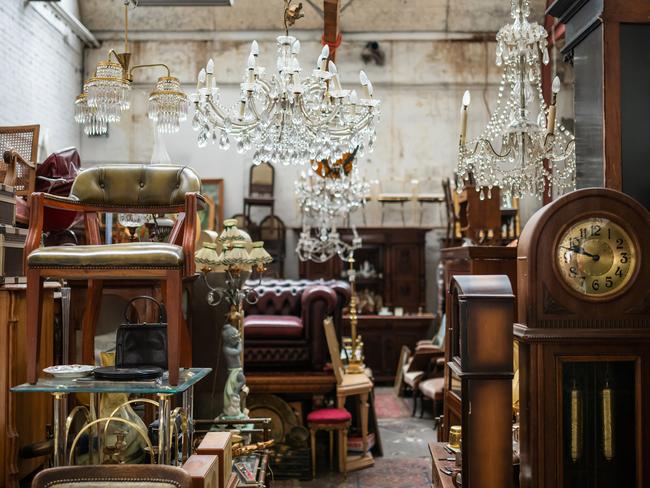
Q. How do I avoid picking up a lemon?
A. If you haven’t realised it already, there are some real bargains to be had on sites like Gumtree but before you make the trek to someone’s house, spend a little time checking out what’s available elsewhere.
Charity shops are a good place to start but Facebook groups like your local Street Bounty lists furniture and household goods that people are giving away by putting them out on the street. If you want to have a hope of getting there before someone else, join a group as close to you as possible. I’ve seen everything from shelving units and pots and pans to velvet lounges and outdoor tables up for grabs. With older furniture, look for hardwood frames free of damage from borers and withstand the wobble test if you lean on them.
The Fixer is here to answer all your home improvement questions.
Email The Fixer at athome@news.com.au
More Coverage
Originally published as Country living: home design ideas and inspiration – how to turn the dream into reality



